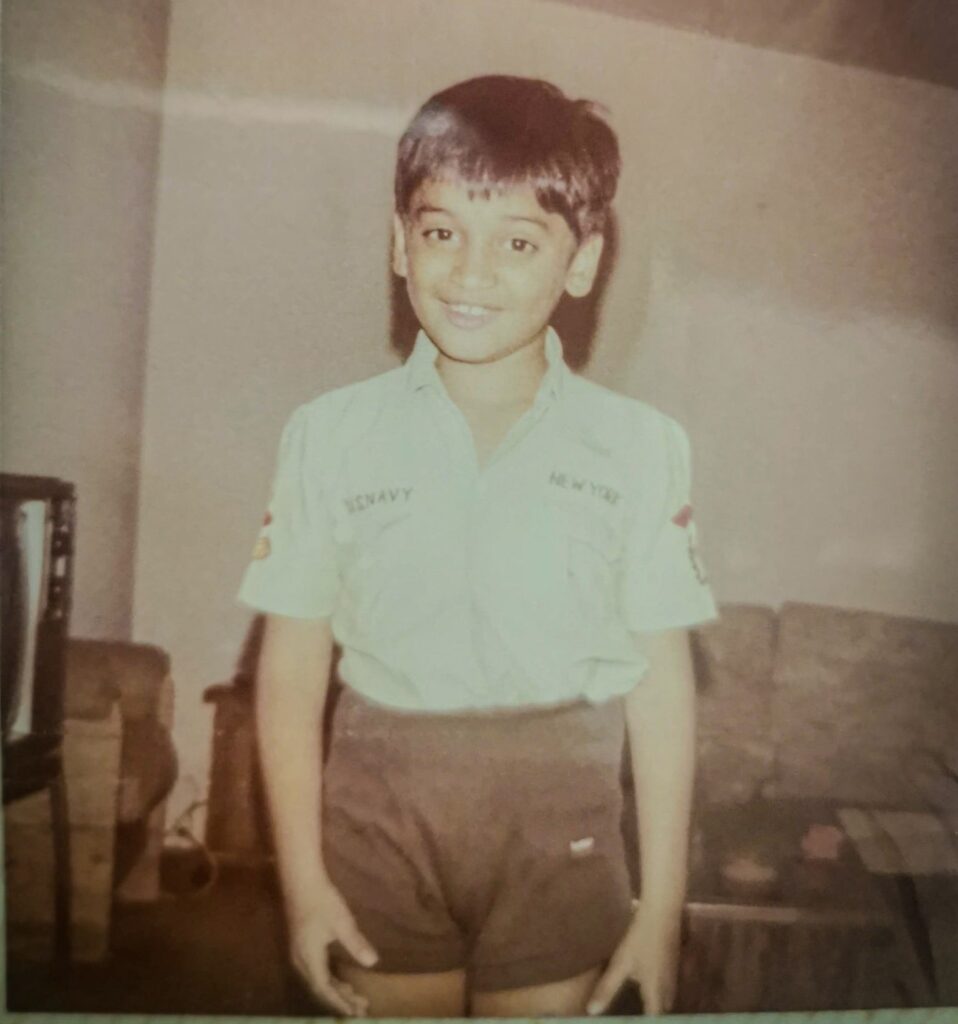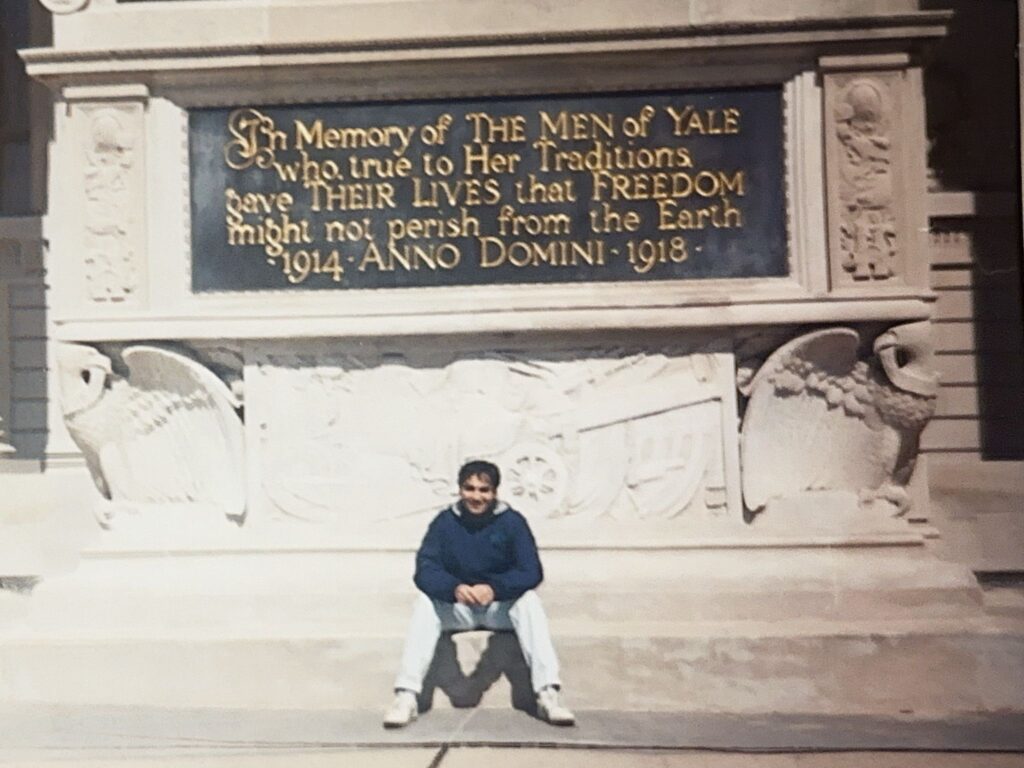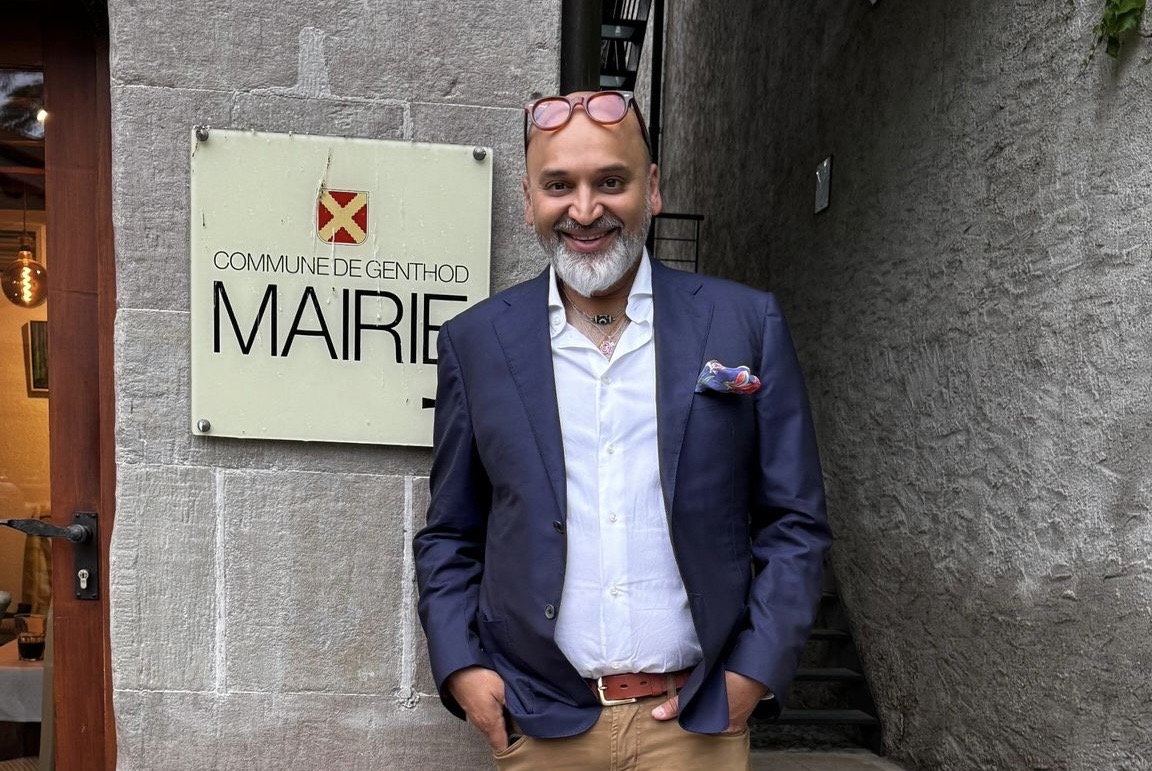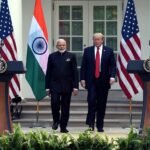For someone who grew up in the United States in the late 1970s and early 80s—when the Indian diaspora was small, tight-knit, and largely invisible—the past week has felt strangely familiar. Donald Trump’s barrage of tweets, first imposing steep tariffs on Indian goods and then publicly dismissing the Indian economy as “dead,” struck not just a diplomatic nerve but something far deeper. For many of us, it reopened a quiet, enduring wound: the sense that no matter how far we’ve come, how much we’ve contributed, we remain—somewhere in the American imagination—foreign, dispensable, or just not quite enough.
I still remember when calling India meant booking an operator-assisted call days in advance. When letters from home arrived by air mail and were read again and again. We, Indians in America, were few—mostly students, professors, and professionals—and we worked hard to integrate.
I later returned in the 90s to study and work until the early 2000s—this time in a U.S. that had grown far more familiar with Indian Americans, and where our community had begun to assert itself with pride. My own journey took me across several states and cities, including New York and Washington, where I worked in the private sector before eventually continuing my global journey elsewhere. America didn’t just educate and host me; it shaped me. Even after I left for more global pursuits, I remained tethered—to family, to friends, and to the values and questions that my time there instilled.

Over the decades, Indian Americans came to be seen as a “model minority”: prosperous, professional, low-drama. We earned that reputation not by accident, but by adapting—modifying our accents, excelling in school, integrating carefully. Nothing was guaranteed. Many of us, including myself, adjusted our ways of speaking, our frameworks for seeing the world, to better fit in.
And yet today, in the aftermath of the threat of punitive tariffs, one wonders quietly: what has all that earned us?
I’ve lived long enough to hear a landlord tell me we rode elephants to school. I once had a boss refer to Indian employees as just “worker bees”—diligent, clever, but not leadership material. These were moments that we absorbed, endured, and quietly worked to overcome. The recent rhetoric from Trump—brash, dismissive, and stereotyping—feels like a regression to those days.
Perhaps that’s why it stings. Not because it defines us, but because it ignores all the ways we’ve worked to move beyond those caricatures.
Today, India is not the country many of us left behind. It is one of the fastest-growing economies in the world—in fact, growing at twice the rate of the U.S., and forecast to grow three times as fast. A far cry from being “dead.” It is increasingly shaping global diplomacy, building its own path between global powers, lifting millions out of poverty—a Herculean effort not to be trivialized in 180 characters or less (though there is still much work to be done)—and capturing the imagination of a new generation determined not to be defined by foreign approval, determined to put its own stamp on the world.
What does it mean, then, when a current U.S. president uses the language of disdain to describe this rising India?
This isn’t just a political skirmish. It’s a moment of reckoning—particularly for Indian Americans. For years, we’ve celebrated the success of our community. And there is much to celebrate. Many Indian-American diaspora kids talk about top university applications—including to the Ivy League—with a confidence that nothing can stop them. Our professionals lead Fortune 500 companies, start-ups and venture funds, shape public opinion, perform on global stages, and hold positions in government—including the current one—roles that weren’t even imaginable for the diaspora of the 1980s. We’ve taken pride in our Bhangra parades, our Diwali displays, our growing political presence.
And yet—when India is mocked so publicly, where is the collective Indian American diaspora voice?
To be fair, there have been a few responses, and perhaps more will come. But a noticeable quiet lingers. Some say it’s strategic silence. Others suggest it’s fear—of backlash, of losing access, of complicating professional relationships. Still others have offered a kind of cultural fatalism: “Just ride it out.” And then there are those like the Indian-American venture capitalist who, on Indian television earlier this week, suggested that the appropriate response was simply to “kiss Trump’s ring.”
But in moments like this, is silence a form of prudence—or a symptom of something deeper?
I say this not from a place of judgment, but from reflection. Though I left the U.S. years ago, with so many formative years spent there, I feel part of me remains part of that diaspora. Today, I live in Switzerland, where I was elected to public office in a small commune. Even here, with a tiny Indian community, I felt it important to engage politically—to show that we belong not just economically, but civically too.

In Switzerland, the Indian community is far smaller and less visible. And yet, even there, I’ve seen how participation in public life—no matter how local—can quietly shift perceptions. Representation is not always about winning debates; sometimes, it’s about simply being in the room. That is something the Indian American community, despite its size and success, may still be grappling with.
In spite of our eye-popping accomplishments, what is “enough”?
The Indian American community finds itself politically orphaned. Once reliably Democratic, and increasingly Republican-leaning in recent years, it now looks on as both parties turn unpredictable. The Republican leadership—long seen as India’s more natural ally—has gone quiet, save for a few exceptions like Nikki Haley. Meanwhile, elements within the progressive wing of the Democratic Party have, in recent years, made statements that appear openly critical or even hostile toward the Indian government. There is no longer a safe harbor—only shifting winds and complicated choices.
One could argue that this is just Trump being Trump—though it also creates a kind of permissiveness. We’re already beginning to hear more voices of disdain from left and right alike. Even if the moment passes, the residue remains. It lingers in the discomfort it has caused. It echoes in the choices now being made by young Indian students, who are no longer sure the U.S. is the place to study, settle, or dream. Many are choosing to stay in India—to be part of what they see as a new chapter. And when they look across the ocean, what do they see? A confident India, yes—but also a diaspora that seems unsure whether to stand or step back.
In just over a week, Indians around the world will mark the 78th anniversary of their country’s independence. But for many, the idea of tariffs and trade barriers evokes a longer memory—of colonial-era instruments once used to throttle India’s growth and subjugate its aspirations. While it may turn out that Trump’s tariffs are fleeting, tactical, or even performative, the damage has already been done. They have stirred something deeper—something ancestral. A reminder that India has had to fight not only for its independence but for its dignity in global markets and narratives.
Younger Indian Americans are growing up in a world where India is not an abstraction or a nostalgic story from their parents—it is a geopolitical actor, a tech and culture mega-hub, and a nation asserting its place on the global stage in the interest of the aspirations and well-being of 1.4 billion people—almost 20 per cent of humanity—and who have needs that can’t be trivialized in a “tweet”. Their relationship with India is shaped less by longing and more by parity. This generational shift may hold the key to how the diaspora finds its new voice.
The Indian diaspora has long occupied a unique space—not only as economic or political actors, but as narrative custodians. We have helped explain India to the world, and the world to India. But in an age of instant opinions and performative outrage, that role becomes harder—and more necessary. If we don’t speak up to challenge distortions or assert the complexity of India’s story, who will? Silence risks letting old tropes resurface. And worse, it leaves younger members of our community without a clear map of how to navigate their own hyphenated identity.
This isn’t a call for confrontation. Nor is it a nostalgic yearning for a simpler time. This is a moment for reflection. For asking ourselves, gently but urgently:
What kind of diaspora do we want to be? One that celebrates from the sidelines—or one that shapes the conversation? Can we move beyond performance to presence, from soft power to strategic power?
India has changed. Its young generation has no memory of the days when it was the object of pity, milk carton philanthropy, exoticism, or condescension. They expect respect, and rightly so. And if we, as the diaspora, wish to remain connected—not just emotionally, but meaningfully—we too must evolve.
This article is not a manifesto. It is a letter across continents. A mirror. A reckoning. Because the bridge between the world’s two greatest and most diverse democracies deserves more than silence.
Disclaimer: The opinions and views expressed in this article/column are those of the author(s) and do not necessarily reflect the views or positions of South Asian Herald.






